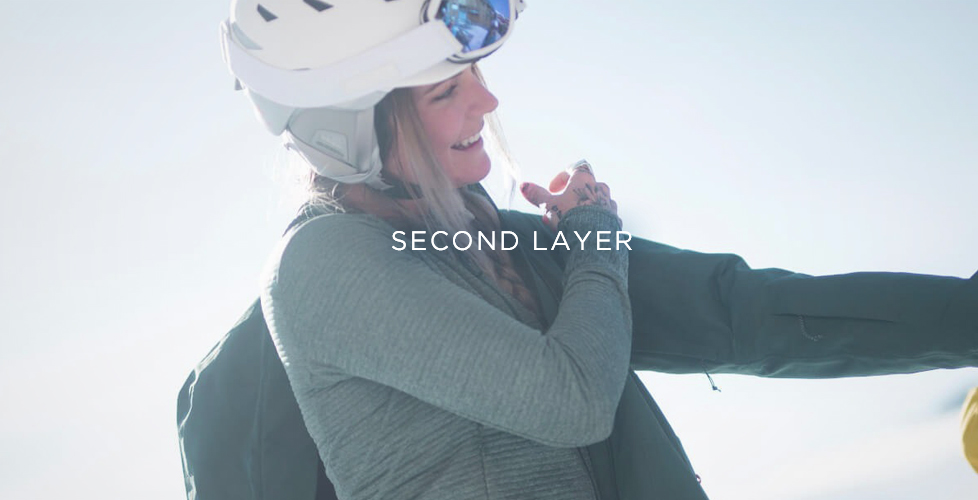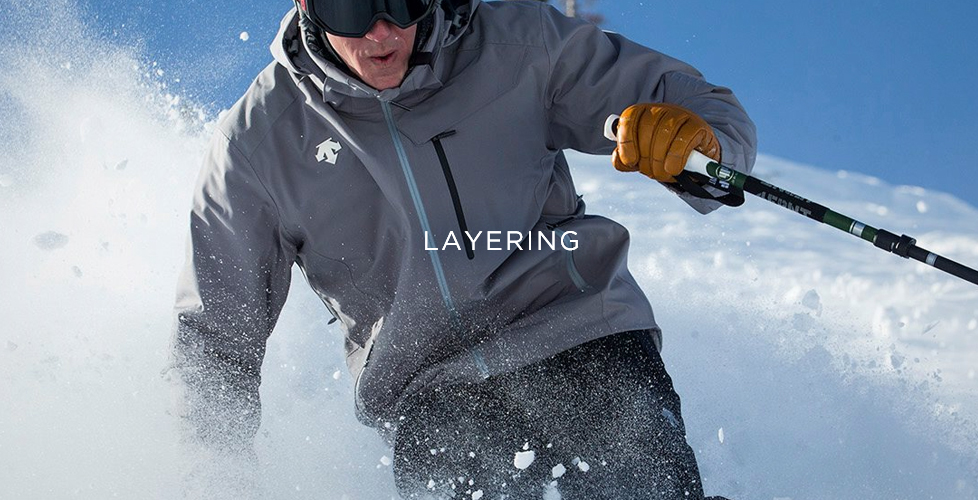
What underwear or innerwear do you wear under your ski wear?
Here's what recommend you wear under your clothes!
Do you ever wonder what you should wear under your ski or snowboard clothes?
If you wear too much underwear for the cold, you will not be able to maximize your performance.
Here are some tips on how to wear thin layers according to the time of year, weather, slope conditions, and your level of skiing/snowboarding.
CONTENTS

WHAT IS THE FIRST LAYER?
There are many people who think that skiing is cold.
Of course, the coldness varies greatly depending on the weather and temperature of the day, but when you ski, you will be exercising your entire body, which will make you feel warm and even sweaty.
This is where the first layer (the clothing closest to the skin, such as underwear and t-shirts) is important.
The first layer should be made of quick-drying, sweat-absorbent material.

WHAT IS THE SECOND LAYER?
In the ski resort, the weather and temperature may change greatly in the morning, afternoon, and evening, so please use a second layer to adjust the temperature.
For the upper body, we recommend a half-zip product with a collar that allows you to adjust your body temperature by opening and closing the zipper depending on the weather, temperature, and amount of exercise.
You can adjust the temperature of your upper body by wearing layers of clothing, but you do not need to wear layers on your lower body because the thickness of your tights will adjust the warmth.
(If it is cold and you want to wear layers, please wear a middle layer of seven-minute length middle pants.

WHAT IS THE MIDDLE LAYER?
A middle layer is a garment worn between the outer layer and the second layer.
You can wear it in the morning, afternoon, evening, or in the weather to adjust your body temperature.
It can be worn in place of the outer layer on a sunny day during spring skiing.
Many people also wear it as traveling clothes.
FOR HEAT RETENTION
→Down material is recommended.
FOR MODERATE HEAT RETENTION, QUICK DRYING, AND STRETCH.
→FLEECE MATERIAL IS RECOMMENDED.
FOR HEAT RETENTION AND LIGHTNESS
→Products that use heat-generating materials in the padding are recommended.
Products with bonding material are recommended for race practice.

TIPS FOR LAYERING ACCORDING TO THE SEASON AND WEATHER
THE COLDEST PERIOD
The temperature is low, the wind is blowing hard, and the snow is blowing hard.
The temperature is also low, so thick and warm layers are recommended.
JANUARY/FEBRUARY
On a cloudy day with light snow and cold wind, it is possible to ski with some snow and wind, so it is recommended to wear comfortable layers.
EARLY MARCH
Warm days with melting snow The weather becomes more stable in March.
On warm days, it is advisable not to wear middle layers, but to bring them in case of sudden changes in the weather.
MID-MARCH TO EARLY MAY
Spring Skiing The weather will be more stable than in early March, and the days will be hotter.
There will be a lot of temperature differences between morning, afternoon and evening, so it is recommended to wear or take off your middle layer.
During the day, if the weather is good, you can ski without an outer layer.

First layer (quick-drying and sweat-absorbing), second layer (body temperature control), middle layer (heat retention, can also be worn as outerwear)
By combining the above three types of clothing according to the weather and time of year, you can enjoy skiing more comfortably.
If you're ever in doubt about what to wear, by all means, take a look at these tips!
Also, the weather at ski resorts is changeable, so if you are going in light clothing, it is always recommended to bring a warm layer (middle layer).


